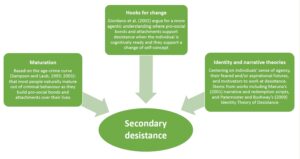Today’s blog is a guest post by Dame Glenys Stacey, Chief Probation Inpector, where she urges everyone interested in probation to help define the two new sets of standards on which Community Rehabilitation Companies and the National Probation Service, and Youth Offending Teams will be inspected. You can keep up with the latest developments by following @HMIProbation on Twitter.
What difference does inspection make?
We at HMI Probation have been thinking for a while about why and how we inspect. That may sound a bit odd, but it is not quite as daft as it sounds.
To inspect is to examine closely or to inquire carefully[1]. Over time, an agreed view of what good inspection should achieve has developed. I first saw it set out in a paper in the Modern Law Review[2]: inspection of any public service should focus on its conformity to standards; the quality of service it delivers and the quality of its management arrangements. The author, Professor Stephen Shute also argued that it should cover the organisation’s efficiency and value for money, but today I want to focus on the first three requirements.

Shining a light
Professor Shute argued that by shining a light on these things, inspection provides those carrying political or executive responsibility, as well as the general public with an independent way of holding agencies to account and testing whether the services they offer are being delivered appropriately. He also argued that inspection can drive up quality in the criminal justice system. Done well, it shines a light, holds people to account and – critically – it should improve services, over time.
Most rational people would agree that inspection should show whether the body being inspected is conforming to standards, but of course, standards in probation have waxed and waned in recent years. With Transforming Rehabilitation, probation providers were freed up to a large extent from established standards, and encouraged to innovate and find new ways of rehabilitating offenders.
Inspection can drive improvement
There is plenty of evidence to suggest that the new found freedoms are not yet working as intended, but that is not my focus today. Instead I am speaking of inspection, good inspection. Where there are no clear, agreed, published standards to show what good quality work looks like, then inspecting is less effective than it can be. Those inspected are not always sure what is expected of them, how their service might be judged, and how and where to focus so as to improve. That is a hole we want to fill.
As HMI Probation, we can produce inspection standards, to show what we are looking for when we inspect. But for standards to do more – to drive improvement in services – then they should be built by consensus. Inspection alone cannot improve quality. Instead it requires the combined efforts of providers, professionals and staff, commissioners and funders, and inspectors, all working towards a single vision of high-quality probation services, informed by listening to those receiving those services. It is that single view, single vision that is so important for us all.
It is essential then that those who will be inspected against standards are involved in their development. We have been working with the NPS, CRCs and others in workshops across England and Wales to develop and refine a new set of standards for probation services delivered by the NPS and CRCs. We think we have a good set of draft standards as a result, and now we want to see if others agree.
Share your views
We have been doing similar thinking about our inspections of Youth Offending Teams. Again, we have been running workshops with YOT staff and others to discuss and develop a common view of standards. We now feel ready to air our proposed standards for youth offending and probation services, in two consultations we are launching today. You will see incidentally that our proposed standards cover the management arrangements of the organisations we inspect, in line with Professor Shute views and the approach of inspectors in other spheres.
We are proposing to use these standards as from April next year. As we do so, we intend to make another significant change, designed to drive improvement in services where it is needed. We intend to rate each youth offending team, NPS division and CRC that we inspect, using a four point scale: Outstanding, Good, Requiring Improvement and Inadequate. We have seen that approach work and drive improvements in other services, and expect it to do the same here, over time.
Of course, CRCs are measured on contract compliance, and indeed all the organisations we inspect are measured in various ways. But we think HMI Probation ratings will provide a prime measure of the quality of probation services, when this is very much needed.
Our consultations run until 8 December. I hope you will find the time to take a look, and to give us your views.
I suggest you read the consultation document first before giving your views.
Click here for the consultation document on probation standards
Click here for the consultation document on YOT standards
[1] Chambers 20th century dictionary (Edinburgh: Chambers, New Edition, 1983)
[2] ‘On the outside looking in: reflections on the role of inspection in driving up quality in the criminal justice system’; Shute, S: The Modern Law Review, Vol 76, May 2013, No 3.









3 Responses
Garbage
i have read your two reports what niche of a niche are these aimed at?
i’m on probation now. My experience is the people behind the desk are nice well meaning folk but utterly useless.
Firstly, punctuality is beyond them. They cannot manage their diary. Several meetings i have been doubled booked. ” can’t chat now i’m with someone else see you next month” this was at my first meet
and the second.
last month i turned up my officier was ill and no one had phoned to let me know, or texted or emailed. ” see you next month”
i emailed last month asking advice on a further eductaion funding route.
To date no one has replied despite my chasers.
This framework is not working no help or support is being offered at all
Thye are just an utter waste of time.
UPW….. just take the group out til 4pm,dont get caught doing nothing in paticular as we cant be bothered to find you anything constructive to do.
Lets just pretend and ‘tick’ loads of boxes